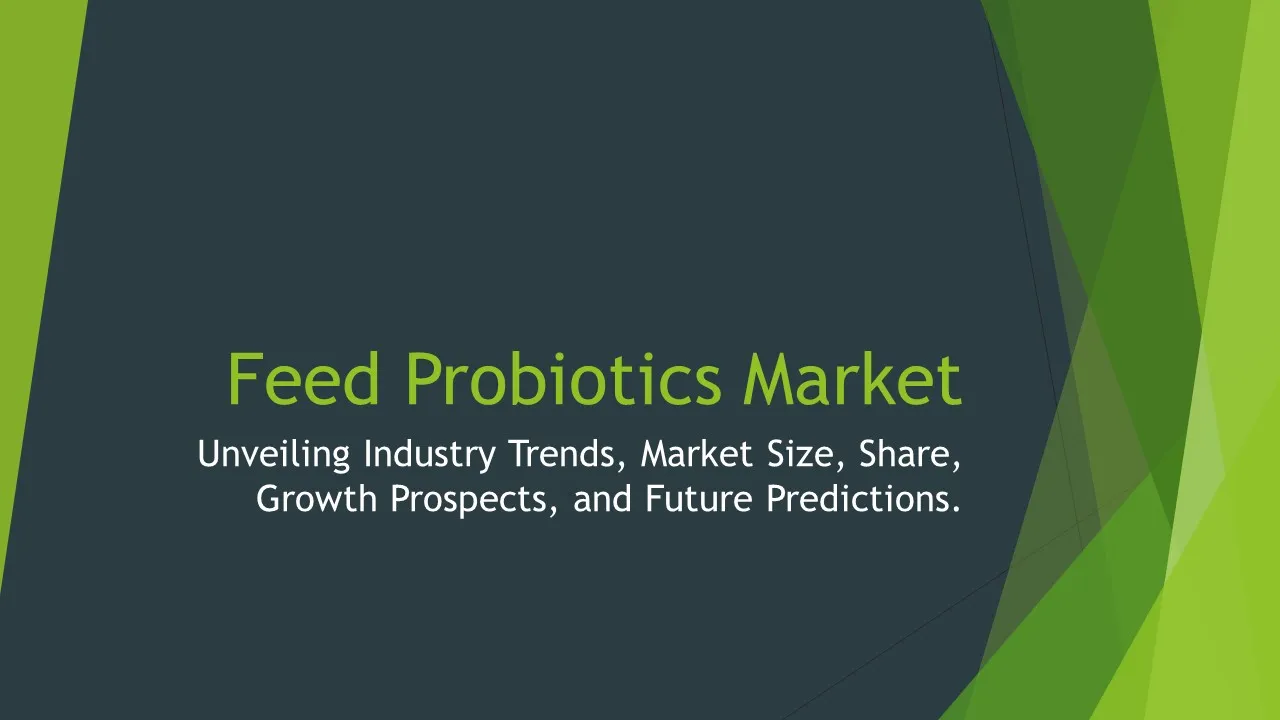Animal Nutrition Sales
Animal Nutrition Sales Market Segments - by Product Type (Feed Additives, Vitamins, Amino Acids, Minerals, and Enzymes), Animal Type (Poultry, Swine, Ruminants, Aquaculture, and Pets), Distribution Channel (Direct Sales, Indirect Sales), End-User (Feed Manufacturers, Farms, Veterinary Clinics, Pet Stores, and Others), and Region (North America, Europe, Asia Pacific, Latin America, and Middle East & Africa) - Global Industry Analysis, Growth, Share, Size, Trends, and Forecast 2025-2035
- Report Preview
- Table Of Content
- Segments
- Methodology
Animal Nutrition Sales Market Outlook
The global animal nutrition sales market is poised for significant growth, estimated to reach over USD 200 billion by 2035, with a compound annual growth rate (CAGR) of approximately 6.2% during the forecast period of 2025-2035. The increasing demand for high-quality animal protein sources, driven by a rising global population and growing consumer awareness regarding health and nutrition, is a major growth factor contributing to this expanding market. Additionally, advancements in animal health and nutrition, alongside the increasing adoption of modern farming practices, are propelling the market forward. Furthermore, the surge in demand for organic and natural feed products is influencing manufacturers to innovate and enhance their product offerings, thereby boosting market growth. The rising trend of pet ownership globally also plays a pivotal role in increasing the demand for specialized nutrition products tailored for pets, further driving the market.
Growth Factor of the Market
One of the primary growth factors for the animal nutrition sales market is the increasing focus on improving livestock production efficiency and animal health. Farmers and producers are recognizing the significant impact of proper nutrition on animal growth rates, reproductive performance, and overall health, thereby leading to higher profitability. Another growth factor is the regulatory push towards sustainable and responsible farming practices, which encourages the use of nutritional supplements that enhance feed efficiency and reduce the environmental footprint of livestock production. Additionally, advancements in technology and research have led to the development of innovative feed additives that improve digestibility and nutrient absorption, contributing to better animal health and productivity. The rise in global meat consumption, especially in developing countries, is another critical factor driving market growth, as consumers demand high-quality protein sources. Finally, the growing trend of personalized nutrition, wherein farmers seek tailored nutritional solutions for different animal types, is expected to create lucrative opportunities in the market.
Key Highlights of the Market
- The market is projected to reach over USD 200 billion by 2035.
- CAGR of approximately 6.2% is expected during the forecast period from 2025 to 2035.
- Rising demand for high-quality animal protein sources is a major growth driver.
- Technological advancements in animal nutrition are leading to innovative product developments.
- Increase in pet ownership globally is contributing to a rise in specialized nutrition products.
By Product Type
Feed Additives:
Feed additives represent a crucial component of the animal nutrition market, as they enhance the nutritional value of feed and improve the overall health and productivity of livestock. These additives include probiotics, prebiotics, and various growth promoters that aid in digestion and nutrient absorption. The growing awareness of the importance of feed quality and the need to improve animal performance without the use of antibiotics is driving the demand for natural and organic feed additives. Furthermore, regulatory changes aimed at reducing antibiotic usage in animal agriculture are prompting farmers to seek alternative solutions, thus propelling the market for feed additives forward. The versatility of these products across various livestock types also contributes to their sustained demand, as they can be utilized in poultry, swine, ruminants, and aquaculture feeds, ensuring their relevance across diverse sectors of animal agriculture.
Vitamins:
Vitamins play a vital role in maintaining the health and productivity of animals by supporting metabolic functions and preventing deficiencies that may lead to health issues. The increasing awareness about the importance of vitamin supplementation for livestock is driving the growth of this segment. Vitamins such as A, D, E, and B-complex are commonly supplemented to enhance growth, reproduction, and immune response in animals. The rise in intensive farming practices and the need for high-performance livestock further escalate the demand for vitamin-rich feeds. Additionally, the growing trend of producing fortified animal products, which cater to the health-conscious consumer base, is contributing to the increasing market share of vitamins in the animal nutrition space. As producers strive for optimal animal health and performance, the significance of vitamins in diet formulations continues to gain traction.
Amino Acids:
Amino acids are essential for various physiological functions in animals, including growth, reproduction, and milk production. The increasing recognition of the importance of amino acid supplementation in animal diets, especially for high-yielding animals, is driving growth in this segment. Amino acids such as lysine and methionine are commonly used in animal feeds to enhance protein content and support overall health. The rise of precision nutrition, which emphasizes the need to balance amino acid profiles in animal diets, further supports the demand for this segment. Moreover, advancements in amino acid production technologies and the introduction of synthetic amino acids have made them more accessible, thus expanding their applicability in diverse animal husbandry practices. As the market for high-quality animal products continues to grow, the role of amino acids in optimizing animal performance remains critical.
Minerals:
Minerals are fundamental to animal health, playing crucial roles in metabolic processes, bone development, and enzyme function. The increasing focus on ensuring balanced mineral nutrition in livestock is driving demand in this segment. Essential minerals such as calcium, phosphorus, and trace minerals are vital for growth, reproduction, and lactation in animals. As the livestock industry evolves towards higher productivity, the importance of mineral supplementation has become more pronounced, leading to increased adoption among farmers and producers. Additionally, the rising trend of integrating mineral supplements into natural and organic animal feeds is further bolstering market growth. The need for mineral-rich feeds is particularly significant in regions with soil deficiencies, as farmers seek to mitigate health issues associated with mineral imbalances in livestock.
Enzymes:
Enzymes are increasingly recognized for their role in enhancing feed efficiency and supporting animal growth. These bio-catalysts assist in the digestion of complex nutrients, improving the overall nutrient absorption in animals. The growing demand for enzyme-based feed additives is driven by the need to optimize feed formulations and reduce feed costs in animal production. Enzymes can help to break down anti-nutritional factors present in feed ingredients, thereby increasing the bioavailability of nutrients. This is particularly important as livestock diets shift towards using alternative feed sources such as legumes and by-products. The emphasis on sustainable and efficient animal production methods has further propelled the adoption of enzyme supplementation, as they contribute to improved feed conversion ratios and reduced waste output in livestock systems.
By Animal Type
Poultry:
The poultry segment represents one of the largest and fastest-growing categories in the animal nutrition sales market. The demand for poultry products, including meat and eggs, continues to rise globally, driven by increasing population and changing dietary preferences. Poultry nutrition focuses on optimizing growth rates, feed efficiency, and disease resistance, which are critical for maintaining competitive production levels. The use of specialized feed formulations, including probiotics and prebiotics, has become prevalent to enhance gut health and improve overall poultry performance. Additionally, the trend towards organic and antibiotic-free poultry production has spurred innovation in poultry nutrition, leading to the development of natural and functional feed additives that promote health and productivity without compromising on quality.
Swine:
The swine segment is another significant area within the animal nutrition market, as pork remains one of the most consumed meats worldwide. Nutrition for swine is focused on promoting optimal growth, reproduction, and overall health, which directly impacts profitability for producers. The use of specialized diets, including high-quality protein sources and essential amino acids, is crucial for achieving desired performance outcomes. Moreover, there is a growing emphasis on the use of feed additives that enhance gut health and prevent diseases, particularly in intensive production systems. As consumers demand leaner and healthier pork products, the swine nutrition market is evolving towards formulations that support better feed conversion rates and overall animal welfare.
Ruminants:
The ruminant segment, which includes cattle, sheep, and goats, is vital for the production of milk, beef, and wool. Nutrition for ruminants is complex due to their unique digestive systems, which require a balanced intake of forages and concentrates. The focus on improving milk yield and meat quality drives the demand for specialized ruminant feeds rich in energy and protein. Additionally, the integration of feed additives such as enzymes, probiotics, and minerals is becoming commonplace to enhance fermentation processes and improve nutrient utilization. As the global demand for dairy and beef products continues to rise, the need for sustainable and efficient ruminant nutrition solutions will remain paramount in the market.
Aquaculture:
Aquaculture is an emerging segment within the animal nutrition market, as global seafood consumption rises significantly. Nutrition for aquatic species involves formulating feeds that meet the specific dietary requirements of various fish and shellfish species. The emphasis on sustainable aquaculture practices has led to innovations in feed formulations that incorporate alternative protein sources and reduce environmental impact. Nutritional products designed for aquaculture aim to promote growth rates, improve feed conversion, and enhance overall health in aquatic species. As the fishing industry faces challenges such as overfishing and environmental degradation, the aquaculture sector is poised for growth, driving demand for specialized nutrition solutions tailored to the needs of aquatic animals.
Pets:
The pet segment is rapidly gaining traction in the animal nutrition market, as pet ownership continues to rise globally. The nutritional needs of pets are increasingly recognized by owners, leading to a growing demand for high-quality pet food products that cater to specific dietary requirements. Pet nutrition encompasses a wide range of products, including premium kibble, wet food, and specialized dietary supplements aimed at promoting pet health and longevity. The trend towards natural and organic pet food is gaining momentum, as pet owners seek to provide their animals with wholesome and nutritious options. Additionally, the emergence of personalized pet nutrition, where tailored diets are created based on individual pet needs, is further driving growth in this segment, as consumers prioritize the health and well-being of their pets.
By Distribution Channel
Direct Sales:
Direct sales channels are increasingly becoming a preferred mode of distribution for animal nutrition products, allowing manufacturers to connect directly with farmers, producers, and end-users. This approach enables companies to establish strong relationships with their customers and gain insights into their specific needs, leading to tailored solutions. Direct sales facilitate better communication regarding product benefits, usage guidelines, and nutritional advice, resulting in increased customer loyalty. Moreover, the direct sales model often reduces the overall costs associated with intermediaries, allowing manufacturers to offer competitive pricing. As the agriculture sector embraces more innovative approaches, direct sales channels are likely to see continued growth alongside the demand for personalized customer service and support.
Indirect Sales:
Indirect sales channels, including distributors, retailers, and online platforms, play a significant role in the animal nutrition market by providing wider access to a diverse range of products. This distribution model caters to various end-users, including feed manufacturers, veterinary clinics, and pet stores, ensuring that animal nutrition products reach a broad audience. The convenience of indirect sales channels allows consumers to easily obtain nutritional products from local feed stores or online marketplaces, enhancing overall market accessibility. Additionally, partnerships with distributors enable manufacturers to expand their market reach and leverage existing supply chains, promoting growth in competitive landscapes. As e-commerce continues to reshape retail experiences, indirect sales are expected to witness robust growth, particularly in regions with increasing internet penetration and online purchasing habits.
By User
Feed Manufacturers:
Feed manufacturers represent a significant user group within the animal nutrition market, as they formulate and produce a wide range of feed products for various livestock types. These manufacturers are increasingly focused on enhancing feed quality through the inclusion of nutritional supplements, additives, and specialized ingredients that promote animal health and productivity. The growing demand for high-performance animal feeds is driving innovation among feed manufacturers, as they seek to develop products that align with evolving consumer preferences for quality and sustainability. Moreover, as regulations concerning animal welfare and nutrition continue to tighten, feed manufacturers are compelled to invest in research and development to ensure compliance while meeting the nutritional needs of animals. This segment is expected to witness steady growth, driven by the need for optimized feed formulations and advancements in feed technology.
Farms:
Farms are crucial end-users of animal nutrition products, as they directly implement nutritional strategies to enhance livestock productivity and health. With increasing pressure to improve production efficiency and meet consumer demands, farmers are prioritizing high-quality nutrition as a key component of their operations. The adoption of specialized feed formulations tailored to specific animal types is becoming more prevalent among farmers, as they seek to optimize growth rates, reproductive performance, and overall health. Additionally, the rising trend of sustainable farming practices is leading to increased interest in natural and organic feed products among farmers, further driving demand for innovative nutritional solutions. As the agriculture industry evolves towards more efficient practices, the involvement of farms in the animal nutrition market is expected to grow significantly.
Veterinary Clinics:
Veterinary clinics play a vital role in the animal nutrition market by providing professional guidance and recommendations on dietary choices for animals. Veterinarians are increasingly emphasizing the importance of nutrition in promoting overall health and preventing diseases in pets and livestock. This trend underscores the growing demand for specialized nutritional products that address specific health concerns, such as obesity, allergies, or gastrointestinal issues. Veterinary clinics are often at the forefront of educating pet owners and farmers on the significance of proper nutrition and the appropriate use of supplements, fostering a strong connection to the animal nutrition market. As awareness of animal health continues to rise, the influence of veterinary clinics in shaping nutritional choices is likely to expand, driving further growth within this segment.
Pet Stores:
Pet stores are key retail outlets for the animal nutrition market, catering primarily to pet owners seeking high-quality nutritional products for their animals. The growing trend of pet humanization has led to increased demand for premium and specialized pet foods, driving innovation in product offerings within pet retail environments. Pet stores often provide a diverse range of pet nutrition products, including dry kibble, wet food, treats, and dietary supplements, thus playing a pivotal role in educating consumers about their pets' nutritional needs. Additionally, the rise of e-commerce has allowed pet stores to expand their reach and provide convenient access to nutritional products. As pet ownership continues to grow, the influence of pet stores on the animal nutrition market is expected to further increase, reflecting changing consumer preferences towards high-quality and specialized nutrition.
Others:
This category encompasses various additional users of animal nutrition products, including research institutions, food processors, and nutritionists who focus on animal health and welfare. Research institutions play a vital role in advancing knowledge about animal nutrition and its impact on productivity and health. They contribute to the development of innovative nutritional solutions and provide valuable insights into emerging trends and challenges facing the industry. Food processors increasingly recognize the importance of animal nutrition in ensuring the quality and safety of animal-derived products, leading to collaborations with nutrition experts to develop optimized feeding strategies. Furthermore, nutritionists specializing in animal health provide tailored dietary recommendations for livestock and pets, driving demand for specialized nutrition products that support specific health needs. As the understanding of animal nutrition evolves, the involvement of these additional users ensures a comprehensive approach to enhancing animal health and productivity.
By Region
The regional analysis of the animal nutrition sales market reveals significant variations in growth dynamics, driven by diverse agricultural practices, consumer preferences, and regulatory frameworks. North America is expected to maintain its position as a leading region, with the market projected to reach approximately USD 80 billion by 2035, reflecting a robust CAGR of 5.5% during the forecast period. The focus on sustainable animal production practices and advancements in feed technology are driving growth in this region, alongside the increasing consumer demand for high-quality animal protein products. Europe is also a key market, projected to reach around USD 60 billion by 2035, as consumers prioritize animal welfare and environmental sustainability in their purchasing decisions. The European market is characterized by stringent regulations regarding feed quality and safety, prompting manufacturers to innovate and enhance their product offerings.
In the Asia Pacific region, the animal nutrition sales market is expected to witness rapid growth, with projections estimating it to reach nearly USD 50 billion by 2035, driven by rising meat consumption and the increasing adoption of modern farming practices. Countries such as China, India, and Japan are leading this growth, as they invest heavily in improving livestock production efficiency and enhancing feed quality. Meanwhile, Latin America and the Middle East & Africa are also emerging markets, with the Latin American market projected to grow to approximately USD 30 billion by 2035, driven by the expanding livestock sector and increasing demand for animal-derived products. Similarly, the Middle East & Africa is expected to see a rise in demand for animal nutrition solutions, as the region grapples with food security challenges and seeks to enhance agricultural productivity through improved nutrition.
Opportunities
The animal nutrition market is ripe with opportunities, particularly in the realm of innovative product development and sustainability practices. As consumers become more health-conscious and environmentally aware, there is a growing demand for natural and organic animal nutrition products that align with these values. Manufacturers have the opportunity to develop specialized feed formulations that cater to this trend, leveraging natural ingredients and sustainable sourcing practices. Additionally, the rise of precision nutrition presents an exciting opportunity for the market, as farmers and producers seek tailored nutritional solutions that address the specific needs of their animals. By investing in research and development, companies can create customized products that optimize animal health and productivity, thereby gaining a competitive edge in the market. Furthermore, the expansion of e-commerce platforms presents a unique opportunity for manufacturers to reach a wider audience and diversify their distribution channels, thereby enhancing market access and growth potential.
Another opportunity lies within the burgeoning pet nutrition segment, driven by rising pet ownership and the humanization of pets. Pet owners are increasingly seeking high-quality, specialized nutrition products that cater to their pets’ specific health needs, which presents a lucrative market for manufacturers. Companies can capitalize on this trend by developing premium pet food options that incorporate functional ingredients aimed at promoting longevity and overall well-being. Moreover, partnerships with veterinary clinics, pet stores, and nutrition experts can amplify the reach of these specialized products, further driving growth in this segment. Additionally, the increasing focus on animal welfare and sustainable farming practices creates opportunities for companies that prioritize ethical sourcing and production methods, appealing to a growing segment of consumers who prioritize sustainability in their purchasing decisions.
Threats
Despite the promising growth prospects, the animal nutrition sales market faces several threats that could hinder its progress. One of the primary challenges is the increasing regulation surrounding food safety and animal welfare, which can impose stringent requirements on manufacturers and complicate product development processes. Compliance with these regulations often entails significant investments in research, quality control, and monitoring systems, which can strain the resources of smaller companies. Additionally, fluctuations in raw material prices, driven by global economic conditions and supply chain disruptions, pose a significant threat to manufacturers' profitability. The reliance on specific ingredients for animal nutrition products can lead to vulnerabilities in production and pricing, affecting market stability. Furthermore, the growing trend of alternative protein sources, including plant-based and lab-grown proteins, may challenge traditional animal agriculture and nutrition markets by shifting consumer preferences towards non-animal-derived products.
Moreover, the increasing consumer awareness regarding ethical and sustainable farming practices can place pressure on manufacturers to adapt their offerings accordingly. As consumers demand greater transparency regarding sourcing and production methods, companies that fail to address these concerns may risk losing market share. The emergence of negative publicity surrounding animal agriculture, especially regarding environmental impacts and animal welfare concerns, presents additional challenges for the industry. To navigate these threats, companies must remain agile and responsive to evolving consumer trends and regulatory frameworks, investing in innovations that align with sustainability and ethical practices while maintaining product quality and safety.
Competitor Outlook
- Nutreco N.V.
- Alltech Inc.
- BASF SE
- Cargill, Inc.
- Archer Daniels Midland Company (ADM)
- Royal DSM N.V.
- Elanco Animal Health Incorporated
- ForFarmers N.V.
- Novus International, Inc.
- Purina Animal Nutrition
- Chr. Hansen Holding A/S
- Merck Animal Health
- De Heus Animal Nutrition
- Land O'Lakes, Inc.
- CP Group
The competitive landscape of the animal nutrition sales market is characterized by a mix of global and regional players, each vying for market share through product innovation, strategic partnerships, and customer engagement. Major companies in this industry are increasingly focusing on research and development to create high-quality, specialized nutritional products that cater to the evolving needs of livestock and pets. Furthermore, the emphasis on sustainable practices and compliance with stringent regulations is prompting companies to adopt more transparent sourcing and production methods, which can enhance their market credibility and consumer trust. The competition is intensifying as players seek to differentiate themselves through unique value propositions and tailored solutions, with a strong focus on customer service and support.
Nutreco N.V. is a key player in the animal nutrition market, known for its commitment to sustainable food production and innovative feed solutions. The company operates across various regions and has a strong portfolio of brands that cater to livestock and aquaculture. With a focus on research-driven product development, Nutreco aims to enhance animal health and productivity while reducing environmental impact. Additionally, Cargill, Inc. is a major competitor, offering a wide range of animal nutrition products backed by extensive research and expertise. The company places a strong emphasis on sustainability and is actively engaged in initiatives aimed at promoting responsible sourcing and production practices. With a global presence and diverse product offerings, Cargill is well-positioned to capitalize on the growing demand for high-quality animal nutrition solutions.
Alltech Inc. is another leading player in the market, renowned for its innovative approach to animal nutrition and focus on animal health. The company leverages cutting-edge technology to develop functional ingredients and specialized feed additives that enhance animal performance. Alltech's commitment to sustainability and ethical practices is reflected in its product offerings, which aim to improve animal welfare while delivering optimal nutrition. Similarly, BASF SE is a prominent player in the animal nutrition market, providing a wide array of nutritional solutions, including vitamins, enzymes, and feed additives. The company's strong emphasis on research and development, coupled with a global distribution network, positions it as a key competitor in the market.
1 Appendix
- 1.1 List of Tables
- 1.2 List of Figures
2 Introduction
- 2.1 Market Definition
- 2.2 Scope of the Report
- 2.3 Study Assumptions
- 2.4 Base Currency & Forecast Periods
3 Market Dynamics
- 3.1 Market Growth Factors
- 3.2 Economic & Global Events
- 3.3 Innovation Trends
- 3.4 Supply Chain Analysis
4 Consumer Behavior
- 4.1 Market Trends
- 4.2 Pricing Analysis
- 4.3 Buyer Insights
5 Key Player Profiles
- 5.1 BASF SE
- 5.1.1 Business Overview
- 5.1.2 Products & Services
- 5.1.3 Financials
- 5.1.4 Recent Developments
- 5.1.5 SWOT Analysis
- 5.2 CP Group
- 5.2.1 Business Overview
- 5.2.2 Products & Services
- 5.2.3 Financials
- 5.2.4 Recent Developments
- 5.2.5 SWOT Analysis
- 5.3 Alltech Inc.
- 5.3.1 Business Overview
- 5.3.2 Products & Services
- 5.3.3 Financials
- 5.3.4 Recent Developments
- 5.3.5 SWOT Analysis
- 5.4 Nutreco N.V.
- 5.4.1 Business Overview
- 5.4.2 Products & Services
- 5.4.3 Financials
- 5.4.4 Recent Developments
- 5.4.5 SWOT Analysis
- 5.5 Cargill, Inc.
- 5.5.1 Business Overview
- 5.5.2 Products & Services
- 5.5.3 Financials
- 5.5.4 Recent Developments
- 5.5.5 SWOT Analysis
- 5.6 Royal DSM N.V.
- 5.6.1 Business Overview
- 5.6.2 Products & Services
- 5.6.3 Financials
- 5.6.4 Recent Developments
- 5.6.5 SWOT Analysis
- 5.7 ForFarmers N.V.
- 5.7.1 Business Overview
- 5.7.2 Products & Services
- 5.7.3 Financials
- 5.7.4 Recent Developments
- 5.7.5 SWOT Analysis
- 5.8 Land O'Lakes, Inc.
- 5.8.1 Business Overview
- 5.8.2 Products & Services
- 5.8.3 Financials
- 5.8.4 Recent Developments
- 5.8.5 SWOT Analysis
- 5.9 Merck Animal Health
- 5.9.1 Business Overview
- 5.9.2 Products & Services
- 5.9.3 Financials
- 5.9.4 Recent Developments
- 5.9.5 SWOT Analysis
- 5.10 Chr. Hansen Holding A/S
- 5.10.1 Business Overview
- 5.10.2 Products & Services
- 5.10.3 Financials
- 5.10.4 Recent Developments
- 5.10.5 SWOT Analysis
- 5.11 Purina Animal Nutrition
- 5.11.1 Business Overview
- 5.11.2 Products & Services
- 5.11.3 Financials
- 5.11.4 Recent Developments
- 5.11.5 SWOT Analysis
- 5.12 De Heus Animal Nutrition
- 5.12.1 Business Overview
- 5.12.2 Products & Services
- 5.12.3 Financials
- 5.12.4 Recent Developments
- 5.12.5 SWOT Analysis
- 5.13 Novus International, Inc.
- 5.13.1 Business Overview
- 5.13.2 Products & Services
- 5.13.3 Financials
- 5.13.4 Recent Developments
- 5.13.5 SWOT Analysis
- 5.14 Elanco Animal Health Incorporated
- 5.14.1 Business Overview
- 5.14.2 Products & Services
- 5.14.3 Financials
- 5.14.4 Recent Developments
- 5.14.5 SWOT Analysis
- 5.15 Archer Daniels Midland Company (ADM)
- 5.15.1 Business Overview
- 5.15.2 Products & Services
- 5.15.3 Financials
- 5.15.4 Recent Developments
- 5.15.5 SWOT Analysis
- 5.1 BASF SE
6 Market Segmentation
- 6.1 Animal Nutrition Sales Market, By User
- 6.1.1 Feed Manufacturers
- 6.1.2 Farms
- 6.1.3 Veterinary Clinics
- 6.1.4 Pet Stores
- 6.1.5 Others
- 6.2 Animal Nutrition Sales Market, By Animal Type
- 6.2.1 Poultry
- 6.2.2 Swine
- 6.2.3 Ruminants
- 6.2.4 Aquaculture
- 6.2.5 Pets
- 6.3 Animal Nutrition Sales Market, By Product Type
- 6.3.1 Feed Additives
- 6.3.2 Vitamins
- 6.3.3 Amino Acids
- 6.3.4 Minerals
- 6.3.5 Enzymes
- 6.4 Animal Nutrition Sales Market, By Distribution Channel
- 6.4.1 Direct Sales
- 6.4.2 Indirect Sales
- 6.1 Animal Nutrition Sales Market, By User
7 Competitive Analysis
- 7.1 Key Player Comparison
- 7.2 Market Share Analysis
- 7.3 Investment Trends
- 7.4 SWOT Analysis
8 Research Methodology
- 8.1 Analysis Design
- 8.2 Research Phases
- 8.3 Study Timeline
9 Future Market Outlook
- 9.1 Growth Forecast
- 9.2 Market Evolution
10 Geographical Overview
- 10.1 Europe - Market Analysis
- 10.1.1 By Country
- 10.1.1.1 UK
- 10.1.1.2 France
- 10.1.1.3 Germany
- 10.1.1.4 Spain
- 10.1.1.5 Italy
- 10.1.1 By Country
- 10.2 Asia Pacific - Market Analysis
- 10.2.1 By Country
- 10.2.1.1 India
- 10.2.1.2 China
- 10.2.1.3 Japan
- 10.2.1.4 South Korea
- 10.2.1 By Country
- 10.3 Latin America - Market Analysis
- 10.3.1 By Country
- 10.3.1.1 Brazil
- 10.3.1.2 Argentina
- 10.3.1.3 Mexico
- 10.3.1 By Country
- 10.4 North America - Market Analysis
- 10.4.1 By Country
- 10.4.1.1 USA
- 10.4.1.2 Canada
- 10.4.1 By Country
- 10.5 Middle East & Africa - Market Analysis
- 10.5.1 By Country
- 10.5.1.1 Middle East
- 10.5.1.2 Africa
- 10.5.1 By Country
- 10.6 Animal Nutrition Sales Market by Region
- 10.1 Europe - Market Analysis
11 Global Economic Factors
- 11.1 Inflation Impact
- 11.2 Trade Policies
12 Technology & Innovation
- 12.1 Emerging Technologies
- 12.2 AI & Digital Trends
- 12.3 Patent Research
13 Investment & Market Growth
- 13.1 Funding Trends
- 13.2 Future Market Projections
14 Market Overview & Key Insights
- 14.1 Executive Summary
- 14.2 Key Trends
- 14.3 Market Challenges
- 14.4 Regulatory Landscape
Segments Analyzed in the Report
The global Animal Nutrition Sales market is categorized based on
By Product Type
- Feed Additives
- Vitamins
- Amino Acids
- Minerals
- Enzymes
By Animal Type
- Poultry
- Swine
- Ruminants
- Aquaculture
- Pets
By Distribution Channel
- Direct Sales
- Indirect Sales
By User
- Feed Manufacturers
- Farms
- Veterinary Clinics
- Pet Stores
- Others
By Region
- North America
- Europe
- Asia Pacific
- Latin America
- Middle East & Africa
Key Players
- Nutreco N.V.
- Alltech Inc.
- BASF SE
- Cargill, Inc.
- Archer Daniels Midland Company (ADM)
- Royal DSM N.V.
- Elanco Animal Health Incorporated
- ForFarmers N.V.
- Novus International, Inc.
- Purina Animal Nutrition
- Chr. Hansen Holding A/S
- Merck Animal Health
- De Heus Animal Nutrition
- Land O'Lakes, Inc.
- CP Group
- Publish Date : Jan 20 ,2025
- Report ID : AG-491
- No. Of Pages : 100
- Format : |
- Ratings : 4.5 (110 Reviews)









